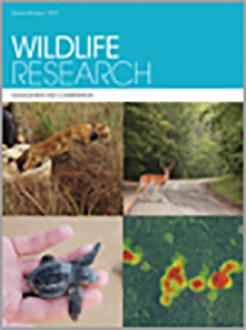Context. Tiger (Panthera tigris), leopard (Panthera pardus) and dhole (Cuon alpinus) represent a typical multi-predator system of species of conservation concern. Several studies have addressed this system, with heterogeneous results, and there’s a lack of information on population dynamics of multi-species assemblages. We studied a time series (1998–2009) of abundance indices for three predators and five prey species in Bor Wildlife Sanctuary (BWS), Maharashtra, India, before it was declared as Bor Tiger Reserve (BTR) in 2009.
Aims. To analyse the complex relationships within a predator–prey system in a dynamic fashion, to analyse data collected in a stable and undisturbed area and to form a comparison basis for future studies within the sanctuary after its declaration as a Tiger Reserve.
Methods. A 24-h effort was made annually to census the BWS. Predators were counted at waterholes from arboreal hideouts. The prey populations were censused along 353-km line-transects. For each species, we analysed the yearly growth rate, testing the effect of inter-species abundance.
Key results.Tiger growth rate did not depend on any particular prey, whereas mesopredators seemed to depend on medium-sized prey. A die-out of dholes in 2001 was followed by an increase in tiger populations (from 4 to 11), which, in turn, negatively affected leopard numbers (from 6 to 2).We found no direct evidence of top-down effect, but the density dependence for three of five prey species could be linked to predation pressure. We found some evidence of interspecific competition among prey species, especially among ungulates, potentially being mediated by predation pressure.
Conclusions. The relationships among species in a predator–prey system are very complex and often could be explained only by more-than-two-species interactions. The disappearance of one predator, not necessarily the top predator, could bring multiple effects, for which it could be difficult to detect causal relationships.
Implications. All subsequent changes in human activities in the sanctuary, as a consequence of its designation as the BTR in 2009, should be evaluated with respect to the results of the present study. The conservation of large predators should rely on the maintenance of a rich and abundant prey base, in which different-sized prey could lessen interactive-competition among the predators.






